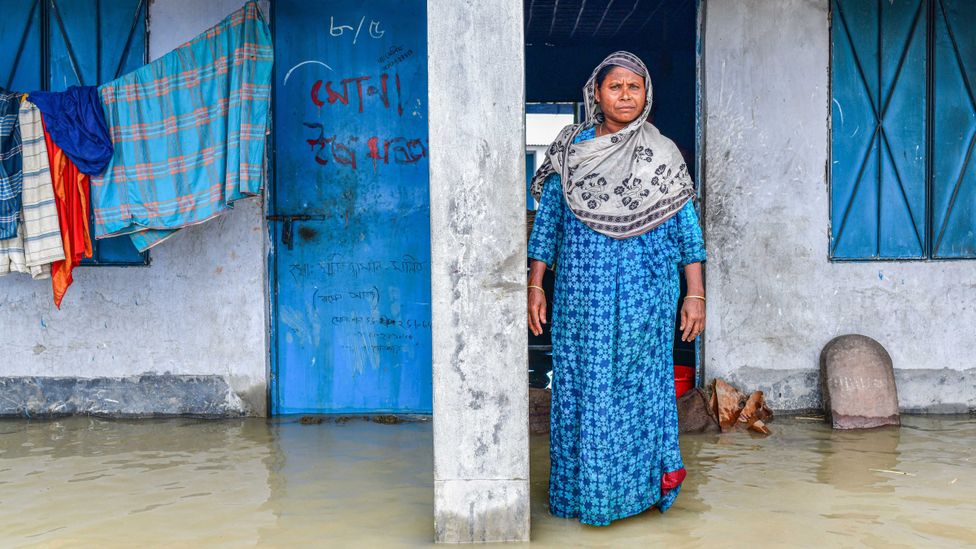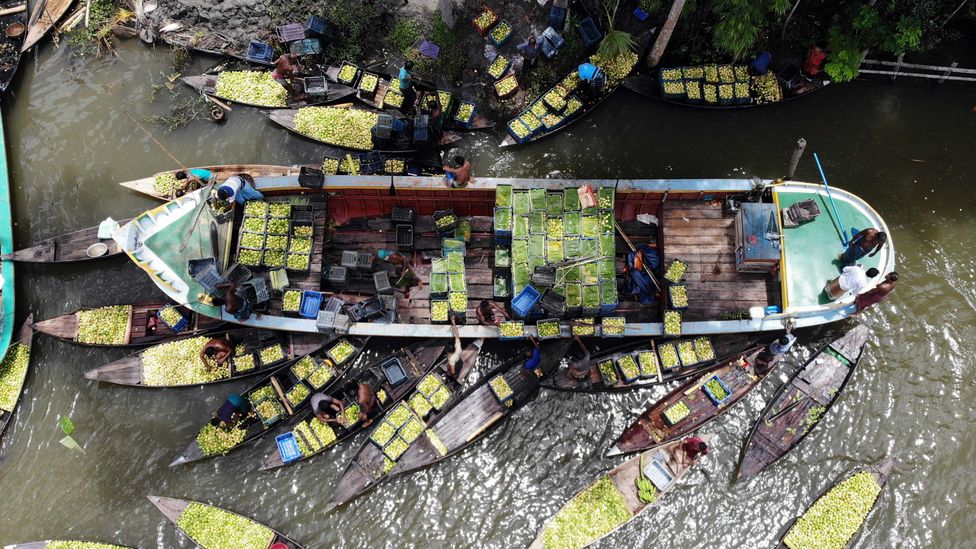
(Image credit: Getty Images)
As climate change is set to make flooding worse in Bangladesh, researchers are racing to find adaptations that balance their restorative and destructive powers.
When this year’s monsoon season hit Bangladesh, it wasn’t an ordinary flood. Within weeks, one quarter of the country was underwater. “We’ve been managing flood relief efforts in the region for 10 years,” says Ahmed Imtiaz Jami, president of Obhizatrik Foundation, a charity and volunteering organisation in Bangladesh. But the 2020 floods were a step-change. “It just wasn’t the same.” Nearly 1.3 million homes were damaged, hundreds of thousands of people were marooned, and hundreds died.
Yet monsoon flooding is increasingly being recognised to be as vital to the delta nation as it is destructive, raising a difficult question: how do you allow the life-restoring properties of floods to continue nourishing the land, while providing protection against the worsening floods of the future?
A dizzying latticework of 230 rivers crisscrosses Bangladesh. Three of those rivers are the massive Brahmaputra-Jamuna, the Ganges (or Padma, as it is known in Bangladesh) and the Meghna, which eventually empty into the Bay of Bengal. Along with water, these river systems carries between 1-1.4 billion tonnes of fertile silt through the country every year, forming the foundation for much of the country’s agriculture. They are also the reason why Bangladesh is one of the world’s hardest hit countries by climate change.

The monsoon season of 2020 was one of the most damaging in years, displacing hundreds of thousands of people (Credit: Getty Images)
Troubled waters
Many of the conventional methods to cope with flooding in Bangladesh have tried to defy the flood-prone nature of the delta nation. After the 1987 and 1988 floods, for example, there was a Flood Action Plan of 1990 with at least 26 feasibility studies and pilot projects carried out in an effort to make the country “impregnable” to water.
It’s like stepping on a gardening hose and then releasing it. The water shoots out – Mohamad Khalequzzaman
Shafiul Azam Ahmad, who has been a water and sanitation specialist at the World Bank and a regional consultant for Bangladesh, Sri Lanka and Nepal, describes the period as one of rapid investment into structural interventions. But they didn’t work out as planned. “Serious waterlogging followed,” says Ahmad. “When the rain fell [in Dhaka] it had no place to go. Pumping it out was difficult and expensive.”
The prospect of fortified walls to contain rivers might seem alluring, but the high-water mark in parts of south-west Bangladesh has been rising faster due in part to the constriction of water flow caused by embankments, putting these areas at a higher risk of flooding. “It’s like stepping on a gardening hose and then releasing it,” says Mohamad Khalequzzaman, a geoscientist and coastal oceanographer at Lock Haven University, Pennsylvania. “The water shoots out.”

Floods form the basis of agriculture in Bangladesh, enriching soils with fertile sediment (Credit: Getty Images)
Walling off low-lying islands using permanent embankments, or polders, has been another popular intervention. One embankment known as Polder 32 – one of 139 protected low-lying islands – collapsed dramatically during a cyclone in 2009, when floodwaters broke through the defenses. The land within the polder, home to more than 10,000 people, was inundated.
Researchers are finding that polders have a very mixed effect on flooding – while they make monsoon flooding worse, they offer some protection from storm surges. One of the main issues is the way they disrupt sediment flow. In 2015,
.....
Indigenous intervention
Post continues at: https://www.bbc.com/future/article/20201201-bangladesh-the-devastating-floods-essential-for-life
Indigenous intervention
Post continues at: https://www.bbc.com/future/article/20201201-bangladesh-the-devastating-floods-essential-for-life
Recommend this post and follow The Life of Earth
https://disqus.com/home/forum/lifeofearth/

No comments:
Post a Comment
Stick to the subject, NO religion, or Party politics